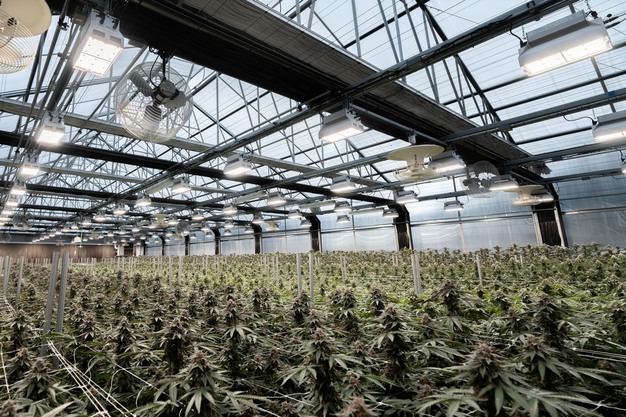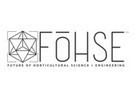"Traditionally, in cannabis cultivation, 'less is more' is a motto that rings true. After dedicating roughly three months to each cycle, the last thing a grower wants to do is ruin a crop by pushing the light intensity too high. However, we have moved away from this," says Mike Howard, CHO at Fohse. He mentions that multiple studies show a linear correlation between light intensity and yield, with one of the most notable tests going up to 1800 PPFD (photosynthetic photon flux density). The quality remained relatively unchanged, with no difference in cannabinoid concentration based on light intensity. "This may be especially evident given that dry inflorescence yield increased linearly with increasing canopy-level PPFD up to 1,800 μmol·m-2·s-1."
However, if not properly managed, increasing light intensity could do more harm than good, Mike explains. "Imagine your car engine is the grow light. Let's say you decided to put a Ferrari engine in a Prius, if that's even possible. There would still be several limiting factors on the Prius that will keep it from driving as fast as the Ferrari, such as the tires, chassis, and brakes. They all aren't specified to go over 120 mph." When applying this same thought process to light intensity (pushing higher light intensity), several limiting factors can arise in a grow. "They can include things like environmental controls, irrigation limitations, genetic limits, viroids, pests, pathogens and more. If you push intensity too high with too many limiting factors, light then becomes a negative stressor, instead of promoting vigorous growth. It's one of the reasons we have several seasoned growers on staff at Fohse. We can understand the complete picture of our clients' setups to help eliminate limiting factors and ensure they can push the plants to their genetic potential. We don't want light to be your limiting factor or let any other factor impact your ability to push and steer your crop to success."
The negative effects
Mike explains that, if not properly managed, there are several negative effects that can arise from light intensity that is either too high or too low. "That said, we rarely see light intensity triggering adverse effects—it is typically another limiting factor. Whether its substrate size, feed or substrate EC, environmental systems cannot keep up with the excess demand. These and many other factors will contribute to lackluster growth." Mike gives Liebig's barrel concept as an example to help understand how nutrients can be a limiting factor. "Just as the maximum practical capacity of a barrel with staves of unequal length is limited by the length of the shortest stave, a plant's growth is limited by the nutrient that is in shortest supply. This analogy helps us understand why more light doesn't always help if you don't address other limiting variables before identifying your cultivar's light saturation point, which is, in my opinion, the end goal."
A common issue
Not identifying limiting factors before pushing higher light intensity is one of the main things Mike sees among growers. "I had a grower once explain cannabis in a way that has always resonated. He said, 'Plants are like tiny little organic robots. You have inputs and outputs', and that has always stuck with me. When increasing light intensity the demand for volume and concentration of nutrients changes and the amount that plant transpires changes, potentially straining mechanical systems in your grow or limiting your fertigation systems that may not be able to keep up. If you decide to increase light intensity—let's say by 20%—that's also additional heat that needs to be removed from the space."
Mike's main point is that it's not always as simple as increasing light and receiving that linear increase in yield. "Identifying the limiting factors in your grow space from a mechanical equipment standpoint should be a starting point before addressing the potential to increase the intensity. From there, identifying limiting factors within your genetic lineup can help identify where those light saturation points are for each cultivar, and where you can then pair cultivars with similar light saturation points and morphology to maximize each run."
"Spectrum tuning often overlooked"
"We are at a point with LED lighting where intensity and efficacy are big drivers behind analyzing a potential lighting vendor and spectrum tuning is often overlooked," Mike says. "When examining a fixture's PPE (photosynthetic photon efficacy), there is a correlation between what wavelengths of light are used and overall intensity. When looking at fixtures with a high PPE reading, we often see a heavier red spectrum. While this might be okay in certain crops or scenarios, in cannabis, too much red light at higher intensities can cause photobleaching and give flower an undesired look. And although it hasn't been shown to impact cannabinoid content negatively, it's not ideal and causes cannabis growers to lower intensity, which in turn will lower their overall yield output."
With this understanding, Fohse wanted to create a fixture that gives the grower full spectrum tunability without sacrificing intensity. "If you do run into a scenario where you are photobleaching, you can simply decrease the red on our fixture to a point suitable to mitigate photobleaching while increasing other spectrums to match your previous intensity. Spectrum control also gives you control over the plant's morphology to a certain extent. Heavier red spectrum lights will create more internodal spacing, leaving you with potentially fewer flowering sites and a lankier plant. If desired, incorporating more 450NM blue will shorten that spacing. This is also a great way to limit the early flower (stretch) phase."
For more information:
Fohse
+1-888-FOHSE-77
https://www.fohse.com/
